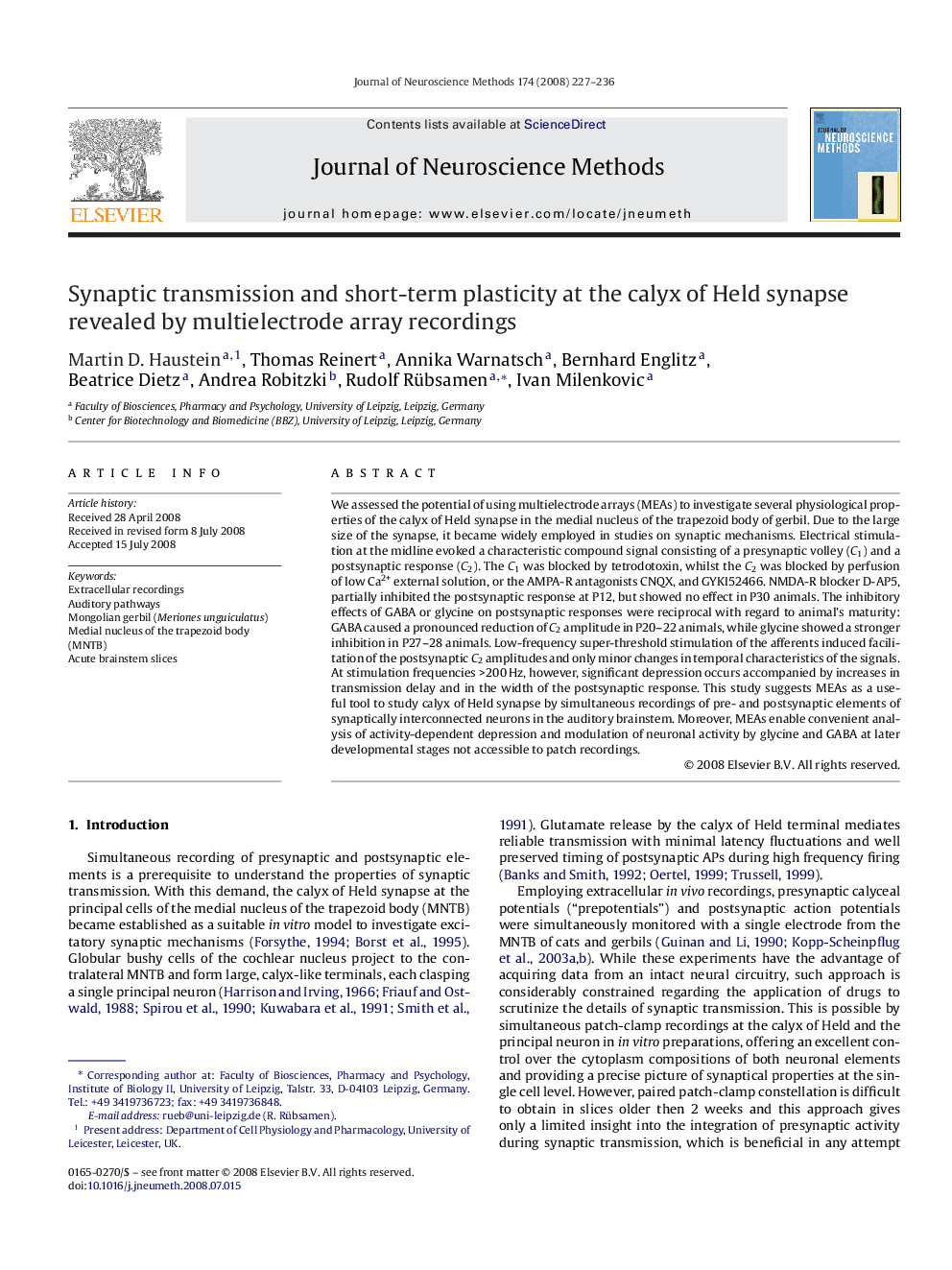| Article ID | Journal | Published Year | Pages | File Type |
|---|---|---|---|---|
| 4335954 | Journal of Neuroscience Methods | 2008 | 10 Pages |
We assessed the potential of using multielectrode arrays (MEAs) to investigate several physiological properties of the calyx of Held synapse in the medial nucleus of the trapezoid body of gerbil. Due to the large size of the synapse, it became widely employed in studies on synaptic mechanisms. Electrical stimulation at the midline evoked a characteristic compound signal consisting of a presynaptic volley (C1) and a postsynaptic response (C2). The C1 was blocked by tetrodotoxin, whilst the C2 was blocked by perfusion of low Ca2+ external solution, or the AMPA-R antagonists CNQX, and GYKI52466. NMDA-R blocker D-AP5, partially inhibited the postsynaptic response at P12, but showed no effect in P30 animals. The inhibitory effects of GABA or glycine on postsynaptic responses were reciprocal with regard to animal's maturity: GABA caused a pronounced reduction of C2 amplitude in P20–22 animals, while glycine showed a stronger inhibition in P27–28 animals. Low-frequency super-threshold stimulation of the afferents induced facilitation of the postsynaptic C2 amplitudes and only minor changes in temporal characteristics of the signals. At stimulation frequencies >200 Hz, however, significant depression occurs accompanied by increases in transmission delay and in the width of the postsynaptic response. This study suggests MEAs as a useful tool to study calyx of Held synapse by simultaneous recordings of pre- and postsynaptic elements of synaptically interconnected neurons in the auditory brainstem. Moreover, MEAs enable convenient analysis of activity-dependent depression and modulation of neuronal activity by glycine and GABA at later developmental stages not accessible to patch recordings.
